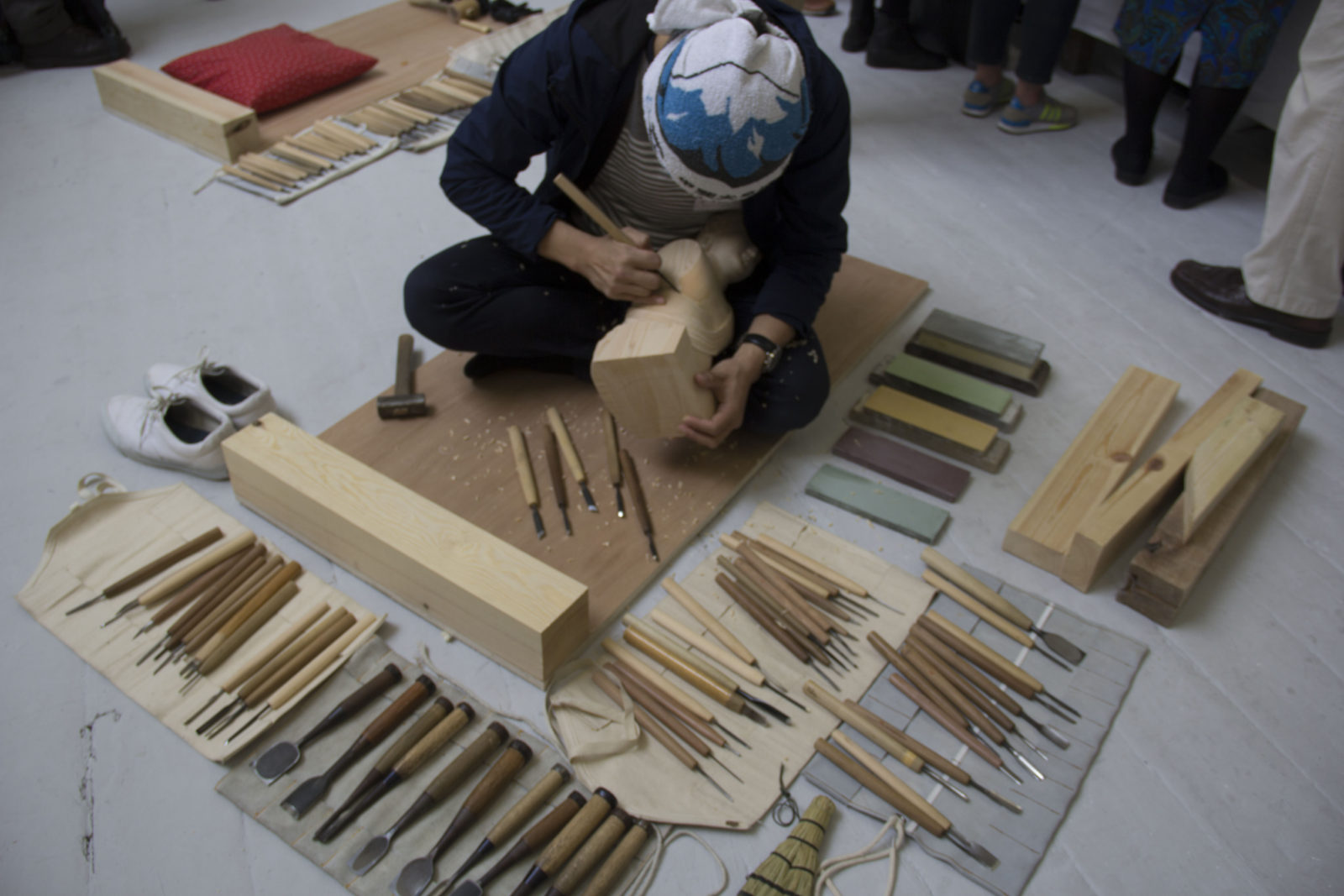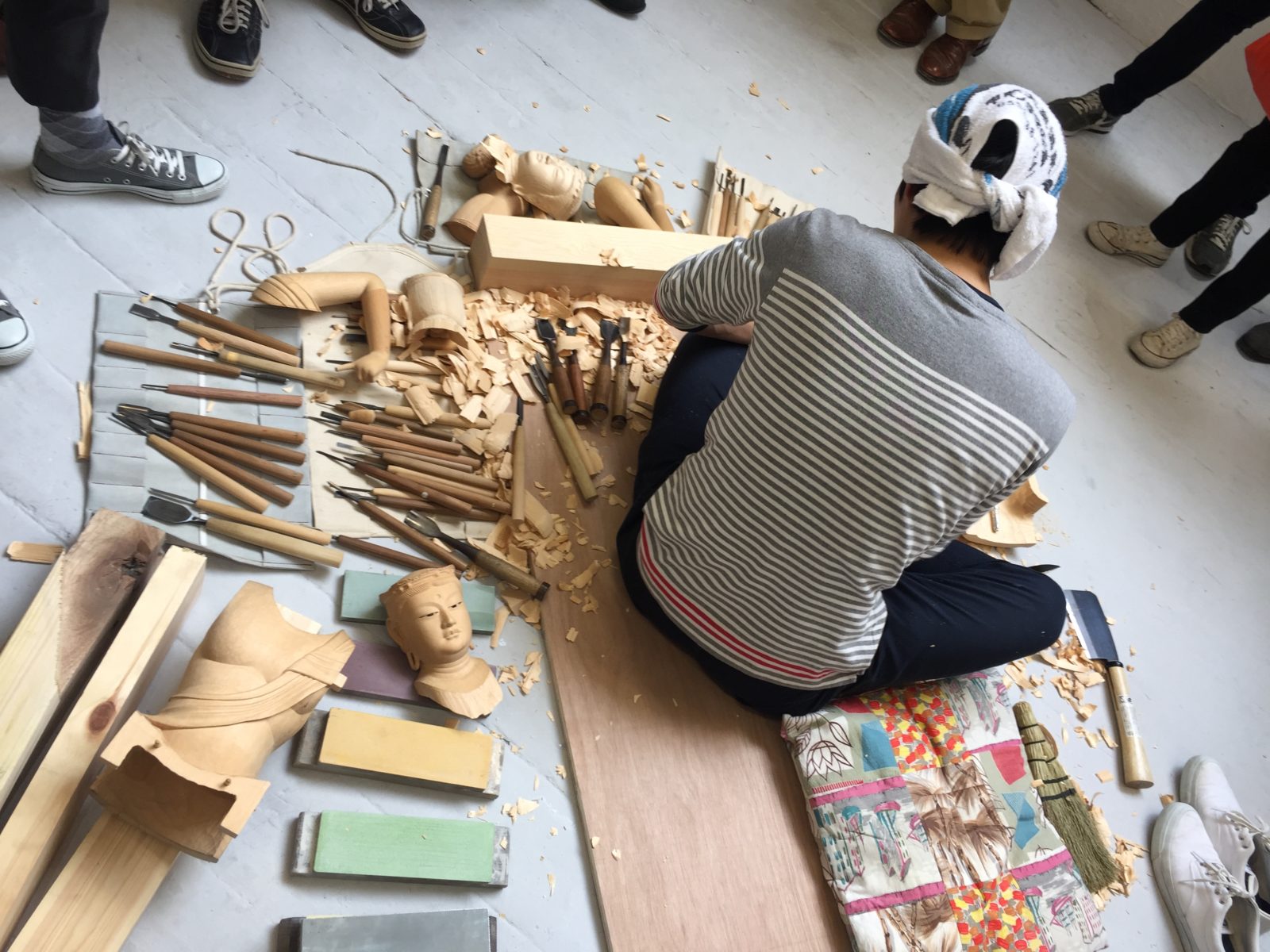Our Material Matters theme was extended through our London Craft Week event in May 2017. Visitors enjoyed gilding demonstrations, exploring the woodworking studios and special demonstrations by visiting specialists from the Tokyo University of the Arts Historic Sculpture Conservation Lab, lead by acclaimed Tokyo-based master carver Professor Yabuuchi Satoshi.
Japan’s leading centre for the research, analysis, conservation and historic reconstruction of Buddhist carvings from the Nara to Edo periods, Professor Yabuuchi’s Historic Sculpture Conservation Lab has been entrusted to work on some of Japan’s most precious artworks from museums and temples across its regions and he has supervised and led on nationally significant conservation projects including a restoration and research of a standing sculpture of Jizo Bosatsu at Shin-Yakushi-ji temple.
Uniquely the research lab works collaboratively on new commissions for historic sites under his supervision ensuring that historical knowledge and important skills are kept alive and relevant in contemporary Japan. Professor Yabuuchi is a sculptor and has worked to commission including the carving of Juroku Rakan (the sixteen Arhats) for Seisho-ji temple in Tokyo.





Dr Kojima Hisanori demonstrating specialist carving techniques



Dr Kojima Hisanori is a sculptor, conservator and expert in wood carving. He studied for his PhD in the Conservation of Cultural Property following his undergraduate and masters degrees in Sculpture at Tokyo University of the Arts. Dr Kojima’s research centred on a Kamakura carving from Todai-ji Chushoin Temple from Nara, Japan. This research involved the physical analysis, tomography and historical research of the standing sculpture of Miroku Bosatsu (Bodhisattva) and the carving of a full scale replica of the sculpture using the historical carving and joinery techniques employed by the master carvers of this period (1185- 1333). Dr Kojima’s study has revealed the various decisions and revisions made by the original artist and due to Dr Kojima’s own history as a practising artist the replica can be seen as a master work in its own right.
The visit was funded by grants from the Daiwa Anglo Japanese Foundation, the Great Britain Sasakawa Foundation and Toshiba International Foundation.

